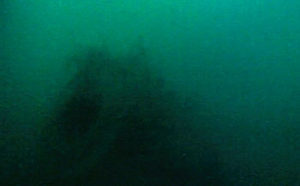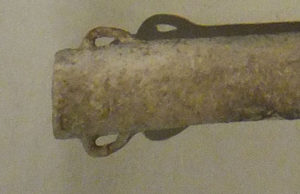This is an ancient wrecksite that is at minimum carrying a cargo of amphoras. The site is settled into the muddy bottom (note how sunken in the multibeam image), and the loose sediment limits the visibility. Because of the low light levels and the mud that is easily stirred, the video was extremely poor for the limited time available to examine the wrecksite. However, it was clear that amphoras were on this wrecksite, types that were long and cylindrical. Moreover, the mouth of one amphora was observed in two cameras, yet the still images are poor. In any event, the observed amphora had the same rim/mouth, handle, and shape has its best comparative match to a type Ramòn 5.2.3.1. If this is the correct identification, then the wrecksite dates to the 3rd – 2nd century BCE. The type was manufactured in Tunisia, thus its presence on a wrecksite in the survey area would be expected. Image on the top right is that taken from TN13-AA, the lower an example of the Ramòn type from the Marsala Museum.
- Menu
- Skip to right header navigation
- Skip to primary navigation
- Skip to main content
- Skip to primary sidebar


